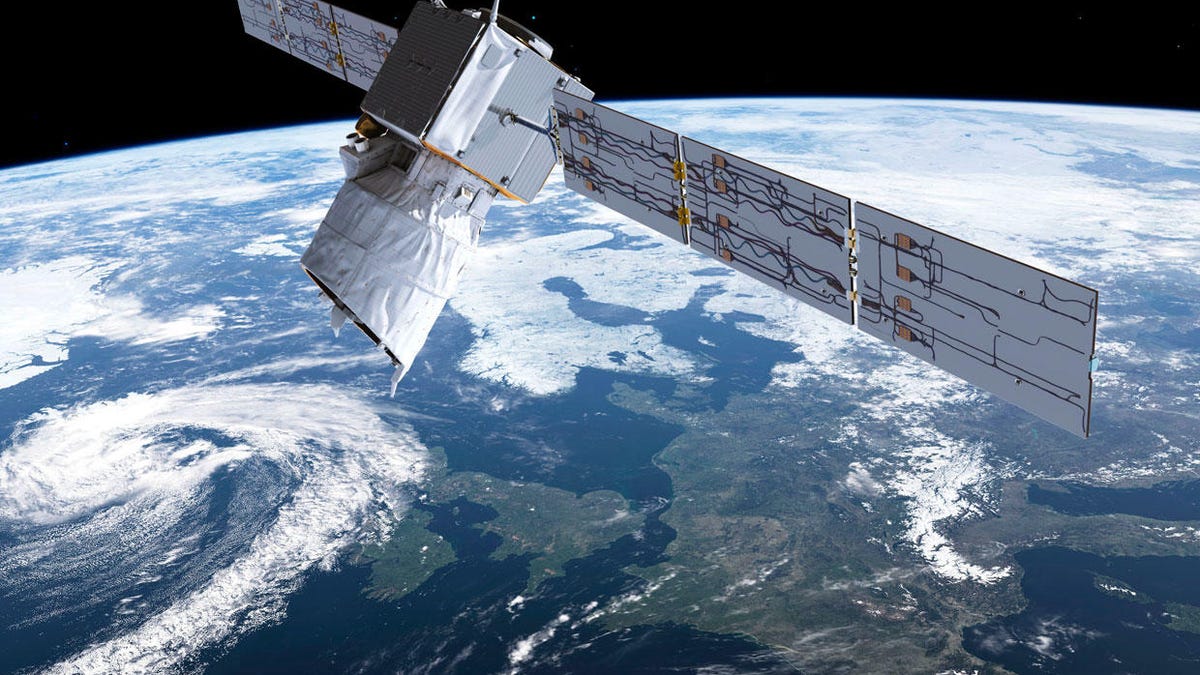ESA's near collision with SpaceX Starlink satellite blamed on a 'bug'
The European Space Agency made an evasive maneuver to keep one of its satellites out of harm's way.

The ESA Aeolus satellite is used for earth observation.
The European Space Agency fired the thrusters on its Aeolus satellite Monday to avoid a potential collision with a SpaceX Starlink satellite. Now it turns out SpaceX just didn't see the message that it might need to move out of the way.
ESA sent a series of tweets Monday morning laying out the little bit of orbital drama it had encountered with some of the birds from Elon Musk's nascent internet broadband satellite mega-constellation.
"Experts in our #SpaceDebris team calculated the risk of collision between these two active satellites, determining the safest option for Aeolus would be to increase its altitude and pass over the SpaceX satellite," the agency tweeted via its ESA Operations account. "The maneuver took place about 1/2 an orbit before the potential collision. Not long after the collision was expected, Aeolus called home as usual to send back its science data -- proving the maneuver was successful and a collision was indeed avoided."
The manoeuvre took place about 1/2 an orbit before the potential collision. Not long after the collision was expected, #Aeolus called home as usual to send back its science data – proving the manoeuvre was successful and a collision was indeed avoided pic.twitter.com/flYGDwFQ57
— ESA Operations (@esaoperations) September 2, 2019
ESA said this was the first time it's had to move a satellite to avoid colliding with a mega-constellation, although not enough SpaceX Starlink satellites have so far been launched to fairly bestow the fleet with "mega" status.
In an emailed statement, a SpaceX spokesperson said the company missed an update from the US Air Force showing an increase in the probability that the two satellites could collide to greater than 1 in 10,000, which is the industry threshold at which evasive maneuvers are recommended.
"A bug in our on-call paging system prevented the Starlink operator from seeing the follow on correspondence on this probability increase," the statement said. "Had the Starlink operator seen the correspondence, we would have coordinated with ESA to determine best approach with their continuing with their maneuver or our performing a maneuver."
SpaceX said it is investigating the problem and "will implement corrective actions."
The company has big plans for the satellite swarm, which is being built to offer global broadband internet access. But so far just the first batch of 60 small satellites has been launched. Those went up on a Falcon 9 rocket in May, and Musk hopes to launch thousands more in the coming years.
The satellite involved in Monday's incident is one of two that SpaceX is intentionally de-orbiting as part of a test.
ESA says it performed 28 collision avoidance maneuvers across its fleet in 2018 but noted that "It is very rare to perform collision avoidance maneuvers with active satellites. The vast majority of ESA avoidance maneuvers are the result of dead satellites or fragments from previous collisions."
It is very rare to perform collision avoidance manoeuvres with active satellites. The vast majority of ESA avoidance manoeuvres are the result of dead satellites or fragments from previous collisions#SpaceDebris pic.twitter.com/mjbdoFfCPa
— ESA Operations (@esaoperations) September 2, 2019
The space agency went on to warn that as Starlink and other satellite constellations grow to hundreds or thousands of satellites, manually avoiding collisions "will become impossible."
ESA added that it's working to automate the process of collision avoidance using artificial intelligence.
Originally published Sept. 2.
Update, Sept. 3, 12:54 p.m. PT. Adds comment from SpaceX.

